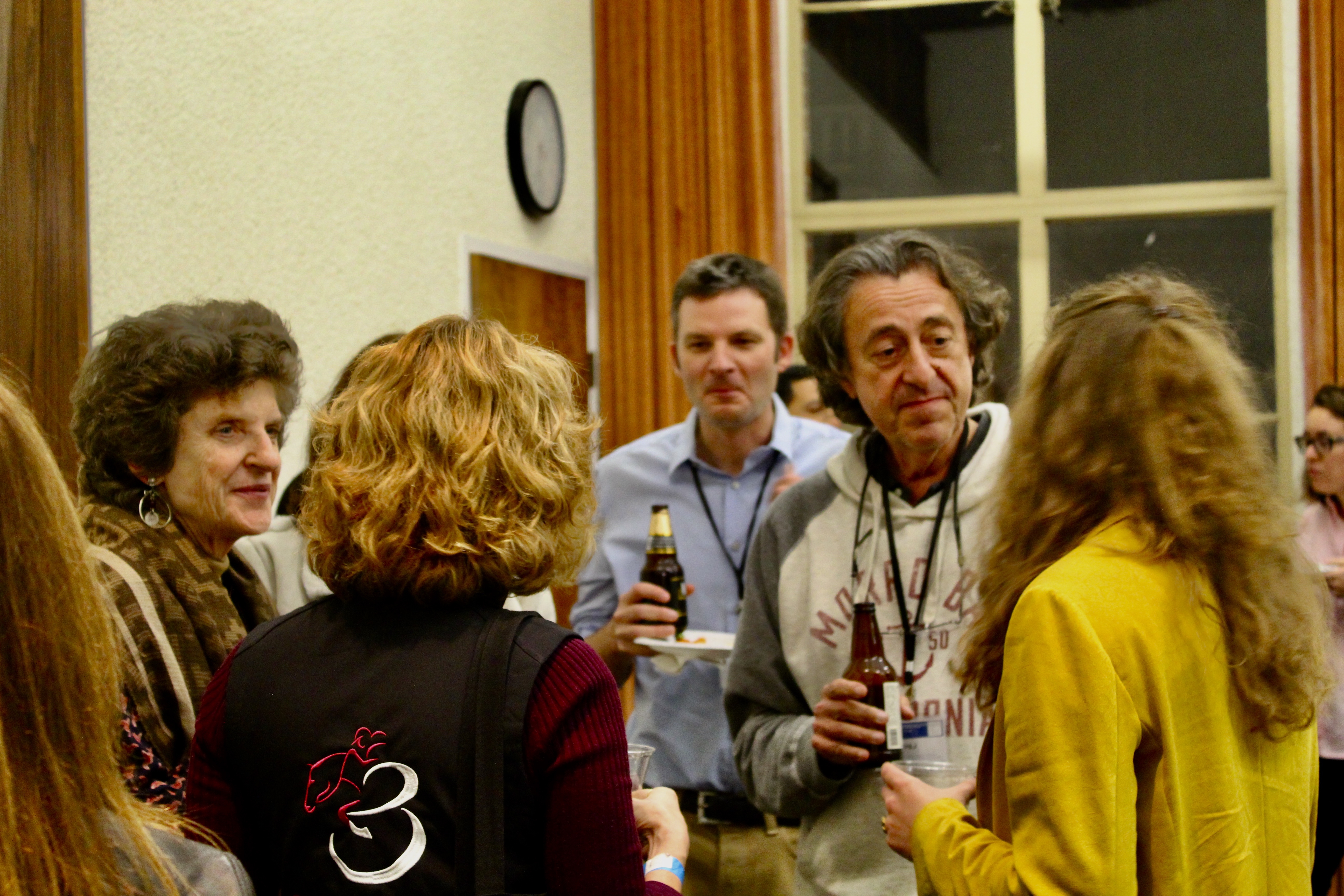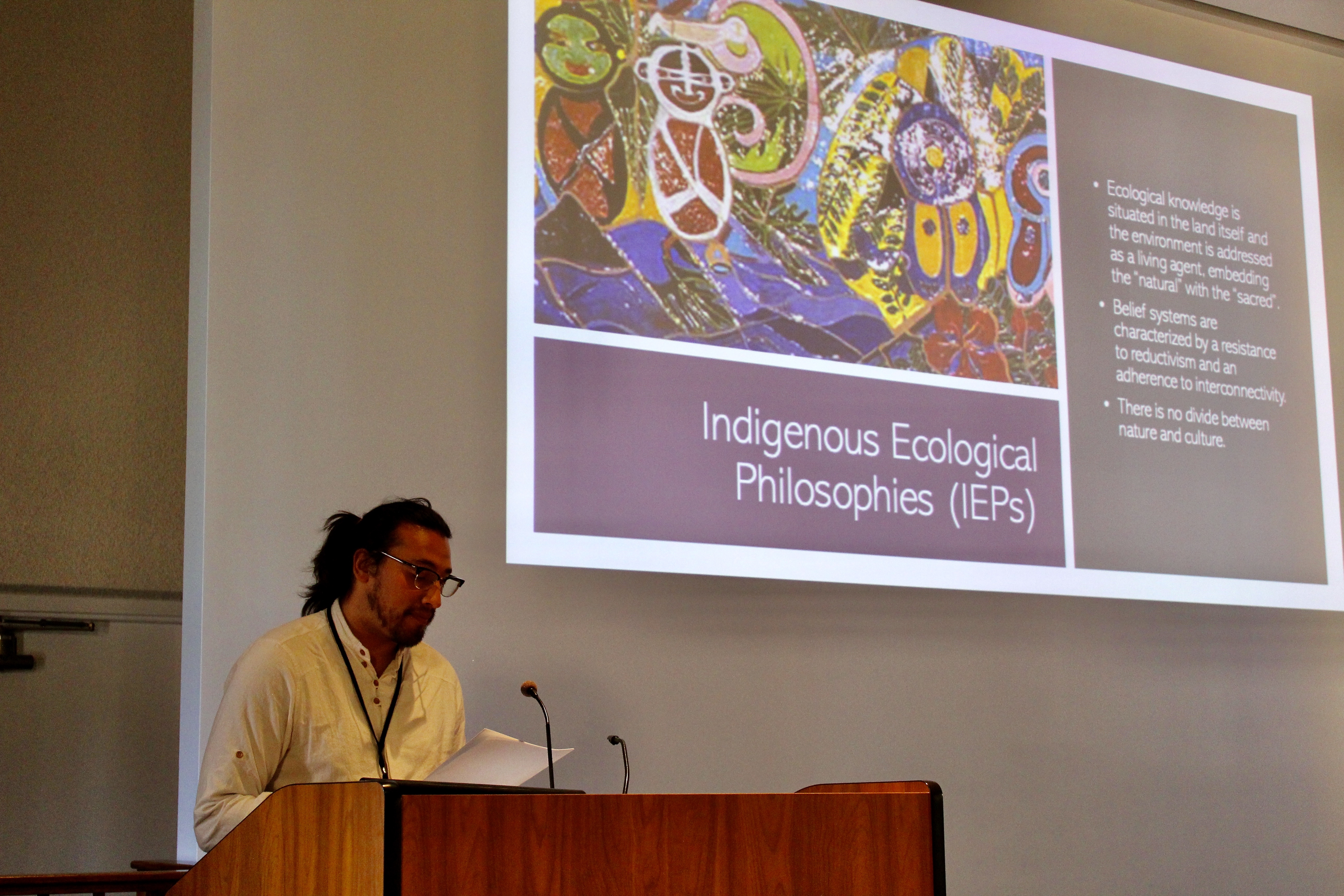Success of the Graduate Archaeology Research Conference Reflects Teamwork and Growth

Liza Davis and Shobhna Iyer
An international slate of speakers comprised the eighth Graduate Archaeology Research Conference, hosted February 7–8, 2020 by the Graduate Student Association of Archaeology, an affiliate of the Cotsen Institute of Archaeology. The success of the conference was the result of much hard work on the part of the six graduate student organizers, who continued the tradition of this conference, which began almost a decade ago.
The organizers chose “Experiencing Destruction and Regeneration in Archaeology” as the theme this year. This provided guidelines for the presenters, who included graduate students from across the United States, as well as from three universities in Great Britain. The first iteration of this conference was held February 19, 2011, and focused on the work of graduate students of the Cotsen Institute, according to John Papadopoulos, the former chair of the Interdepartmental Degree Program (IDP) in Archaeology, professor in the Department of Classics and core faculty member of the Cotsen Institute. Papadopoulos was instrumental in the foundation of the conference. When he introduced the original conference, the program was meant to be a gauge of the health of the degree program of the Cotsen Institute, demonstrating its interdisciplinary nature and the excellence of its graduate students, he said. “One of the great things about the conference,” he added, “is that over the years, we have opened it up to much wider outlooks, and it now reflects some of the most important trends in archaeology.”
Although Papadopoulos was not involved in the event this year, he described it as a huge project. He knows that the students who worked on the conference are going to have a lot of projects in their future and that learning how to prepare something of this magnitude will provide them a valuable experience. Committee members Alba Menéndez Pereda and Eden Franz could not agree more. Working with other committee members Maryan Ragheb, Baisakhi Sengupta, Zichan Wang, and Rachel Wood, they started preparations in May 2019. Five of the six students are Cotsen Institute archaeology graduate students. Franz, who is based in the Department of Anthropology, pointed out that anthropology students have previously been involved in planning the conference. In fact, the original program included as many anthropologists as archaeologists. While the Graduate Student Association of Archaeology is based at the Cotsen Institute, it is open to any archaeologist on campus, including those from the Departments of Anthropology, Art History, Classics, History, and Near Eastern Languages and Cultures.
“The organizers did a phenomenal job,” according to Gregson Schachner,

Sunday reception
associate professor of Anthropology and current chair of the archaeology program. “This conference was as well organized as any archaeological conference I have attended. They selected a great set of speakers and provided a welcoming, intellectually rich experience for everyone,” he added.
The committee expressed gratitude for the assistance of Maddie Yakal, a current anthropology graduate student, who had worked on the previous conference in 2018. She gave them blueprints for what had to be done, as well as access to her records, and emphasized how soon they needed to start thinking about sources of funding and other aspects of the conference. Fundraising was spearheaded by Ragheb and Wood, and sponsors eventually included the Cotsen Institute of Archaeology; the Graduate Student Association; the Dean of Humanities; the Dean of Social Sciences; the Office of Equity, Diversity and Inclusion; and the Campus Programs Committee Board. “We are fortunate that the Cotsen Institute and many units at UCLA are able to contribute resources to support these efforts and to have a group of graduate students who use those resources effectively and wisely,” Schachner pointed out.
Coming up with a theme for the conference was one of the first steps the committee took. “We had complete freedom, so we could run with our ideas. We did a lot of brainstorming,” Menéndez Pereda noted. They eventually came up with the topic of “destruction and regeneration,” with a focus on both aspects of the process. Once they selected the topic, they had a theme to present in their call for papers.
The next step was to identify a keynote speaker. “We deliberately selected a topic broad enough to allow for many different perspectives,” Menéndez Pereda continued. They made a list of potential speakers based on their own research, with ideas from faculty. They were excited to find Patricia Rubertone from Brown University, who is professor and director of graduate studies at the Department of Anthropology. “Her ideas were interesting to us because she studies not only the destruction of Native American heritage in New England, but also the Native American resistance to this destruction. So she fits really well into both sides of the topic.”
Solicitation of abstracts was another challenge. They did an international mass mailing and received more than twenty abstracts, which the committee reviewed for pertinence to the topic and clarity of presentation. The abstracts were submitted anonymously to the group, who read them, discussed them, and finally came to a consensus on ten presentations, Franz explained. They were then able to group these into three sessions: Converted Spaces and Constructed Memories; Ecology and Indigeneity; and Resistance and Receptivity to Cultural Heritage. Each session was concluded with a discussion by a member of the core faculty of the Cotsen Institute: Stella Nair, associate professor of art history; Stephen Acabado, associate professor of anthropology; and Gregson Schachner.

Eric Rodriguez presenting.
The conference gives graduate students “the opportunity to present in an environment that is friendly and welcoming to ideas that are still works in progress,” Franz said. Many of the speakers established new personal relationships, which is also very positive, she added. In addition to the academic aspects of the conference, the committee had to deal with the challenges of the nuts and bolts of putting together a conference. These included arranging the venues, catering, hotels, and transportation. Most of their activities involved chasing people around the university, they all concluded.
Putting together the conference “is almost like a rite of passage for second-year students” Franz said. “It gave us the opportunity to see what goes into running such a big event and how the university works,” Menéndez Pereda added. “These types of conferences are incredibly important for professional development,” Schachner explained. “Building an academic network is an important part of building a career. This conference enabled graduate students from all over the world to establish networks that extend beyond their home institutions. Small conferences like this are some of the best venues for this type of scholarly work. I expect many of them will keep in touch and influence each other’s work far into the future,” he concluded.

Front row, left to right: Maryan Ragheb, Daniel Rodríguez Osorio, Baisakhi Sengupta, Alba Menéndez Pereda, Nora Weller, Liza Davis, Patricia Rubertone, Alexandra Peck, Bianca Bertini, Rachel Wood. Back row, left to right: Martina Di Giannantonio, Eden Franz, Mara McNiff, Eric Rodriguez, Zichan Wang, Irene Martí Gil, Shobhna Iyer.
Published on March 3, 2020.


